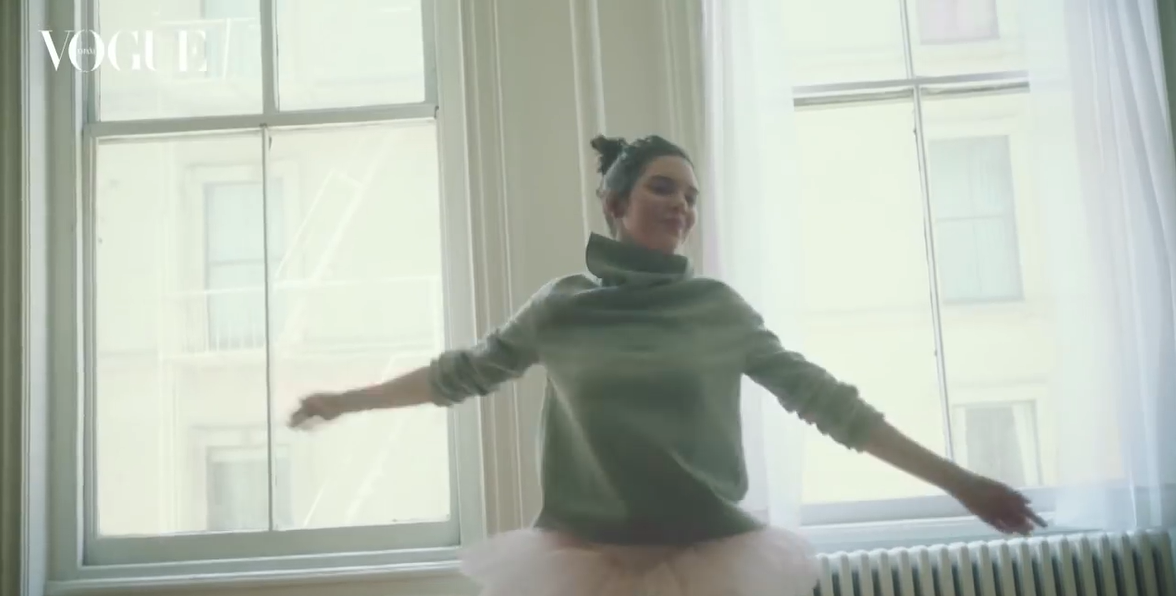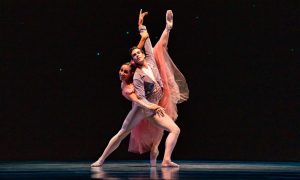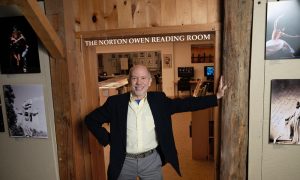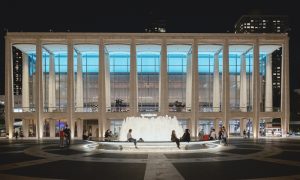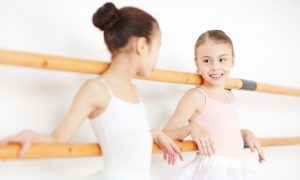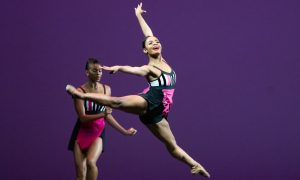The dance community has certainly made its voice heard with reactions of this fall’s Kendall Jenner Vogue España video ad and editorial spread, in which she is dressed in dancewear and pointe shoes and gallivants around a room with a ballet barre. Perhaps this ad speaks more of Jenner’s joyous, carefree outlook on life and less about her efforts to be a real ballerina, but it brings us back to the viral Free People ad of 2014, in which a model ties on pointe shoes and attempts some serious dance moves, or the more recent Wells Fargo ad that didn’t seem to take the vocation of ballerina seriously. And then we are constantly reminded of the many instances in commercials, film and television that dancers are portrayed by models or actors rather than actual professional dancers.
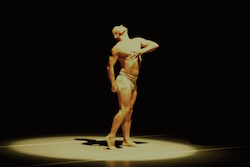
Bradley Shelver. Photo courtesy of Shelver.
Are ads like Jenner’s disrespectful, possibly even offensive, to people who train hard in their craft each day? With so many dancers out there wanting work, why do fashion companies and entertainment producers often hire non-dancers for dance-themed commercial work? Or, is it all in how we perceive things? Should dancers and viewers instead be inspired by artists making art, in any way, and at least acknowledging the art form of dance?
“It was in poor taste,” Jo Matos, artistic director of Joffrey Ballet School’s Children’s Dance and Youth Ballet Programs, told Access Hollywood after the Jenner ad first aired. “For those of us who work very hard and dedicate our entire lives to this art form, it was disrespectful.”
Matos also shares with Dance Informa, “Young girls look up to Miss [Jenner] as a role model. They will be given the false idea that you can just throw on a pair of pointe shoes and dance without putting in the work. The creative team should have asked a dancer to be on set to insure accuracy.”
Bradley Shelver, artistic director of Bradley Shelver Contemporary Dance Theater and the Steps Repertory Ensemble, also had a negative reaction when he first came across the commercial.
“I think it’s on the same trend as celebrities being used in fashion magazines rather than models,” Shelver says. “I think that dancers are not seen as star quality, and therefore not considered able to sell or represent brands. Dance is often a fantasy, and many young kids emulate ballerinas because we are the epitome of hard work, discipline, grace and beauty…perfect representatives of any brand or fashion house.”
This outrage is probably not the fault of the model or actor, who signs on to a job and shows up to do what he/she is told. In fact, on October 27, Jenner spoke out about the controversy, defending her role in the ad and saying it was not her fault.
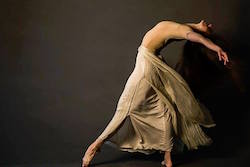
Allison DeBona, first soloist with Ballet West. Photo by Logan Sorenson.
And some people in the dance community actually stood up for Jenner. Allison DeBona, first soloist with Ballet West and who starred on the reality TV show Breaking Pointe, says that the model was simply doing her job. And while DeBona does believe that companies should not hire non-dancers to promote dance-related products, she also uses her growing presence to promote positivity in the dance world, such as through education (she is the artistic director of artÉmotion Summer Intensive) and art-sharing (she started #ArtWithAlli to post dance content).
“When the editorial came out with [Jenner] in pointe shoes,” DeBona recalls, “I was more upset with how the dance community reacted to the video and photos. There is beautiful content out there, of ballet and other dance forms being represented properly, but they are not shared as often as a misrepresentation is.”
There are certainly examples of dance being depicted by actual dancers in popular culture content, such as the limited STARZ series Flesh and Bone, which cast ballerina Sarah Hay as its lead actress, as well as a host of other professional dancers, or this summer’s Honda Civic commercial featuring Houston Ballet’s Karina González. But is this not occurring enough? Does this misrepresentation trend happen more often with dance than with other occupations?
“Yes,” Shelver affirms, “because we have very few recognizable stars outside our community. I think Misty [Copeland] is starting to break those molds a bit after her work with Under Armour and Gatorade. I think ballet is a clearest representation of the physical arts. It is stereotypically defined by tutus and pointe shoes. This represents grace, strength and beauty, when presented correctly with trained professionals. When taken out of context with a non-dancer, it starts to look comical because the obvious training is not there.”
When dancers are not booked for dance-themed work, DeBona says, “it’s disrespect and, to be frank, quite ignorant on behalf of the marketing team. However, it is a representation of how well we professional dancers are doing at our jobs to educate the public on what real technique is. We need to be doing more and making ballet, in this case, more accessible to the general public and not just balletomanes.”
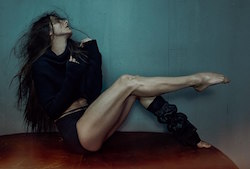
Allison DeBona in ‘Vogue Italia’. Photo by Emma Summerton.
DeBona is quick to stray from the negativity surrounding the issue. This past August, she was featured in her own video and editorial for Vogue Italia (the company found her through her Facebook page, she says), and it was an ad that featured the ballerina expressing herself and doing so with real classical technique. Yet, it still received backlash, and DeBona was criticized for “selling out” for being too suggestive.
As a response, she defended herself and her endless efforts to create art. “I hustle,” she says. “I work seven days a week. I’m always tired. I’m always reliable. I’m passionate about everything I believe in, even when people try to tell me to relax or take a break. I’m unapologetic about my choices because I’m confident in who I am. I’m honest. I try my best to be supportive of other’s endeavors. If you want results, put in the work. I hope all my opportunities, whether successes or failures, teach younger dancers that, as artists, we are to take chances.”
Although Jenner’s Vogue ad demonstrates that ballet is becoming more mainstream, it’s a far cry from the amount of proper representation working dancers could have.
“If companies are trying to make a buck off of our art form, they should at least try to learn and understand that it takes years and years of dedication to achieve what we have as professional dancers,” DeBona shares. “It simply sends the wrong message to the youth.”
While it’s pretty unanimous that dancers think actual dancers should be hired for dance-themed commercial work, what can be done about the issue?
“I think perhaps writing letters to these ad agencies may not make any kind of difference unfortunately,” Shelver states. “I think the way we have been using social media to voice our feelings and objections is a good way to start since all the agencies, magazines and PR firms monitor and use social media to reach a younger demographic.”
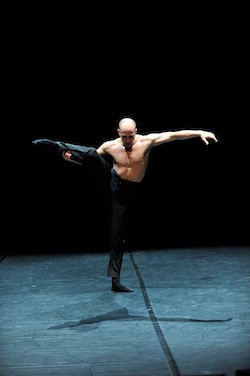
Bradley Shelver. Photo courtesy of Shelver.
And DeBona urges the dance world to individually encourage change by promoting good art.
“Everyone has something to say when they feel slighted, but I ask you, what are you doing to change the culture?” she asks. “Put yourself out there. If you want to be in a commercial and represent dance the way you feel it needs to be represented, then get an agent and go to auditions. You don’t like the video dance content out there that streams on Facebook, take your smart phone and film something you’re proud of. Share the content from others you do enjoy!”
By Laura Di Orio of Dance Informa.
Photo (top): A scene from the Kendall Jenner Vogue video that caused a stir.


